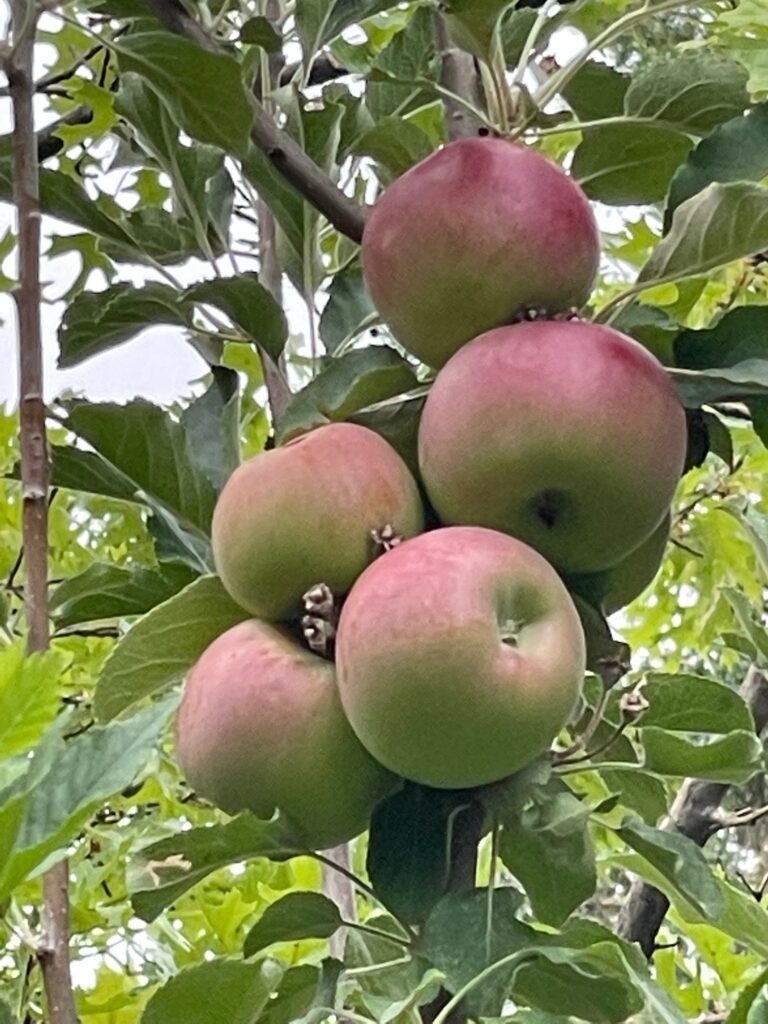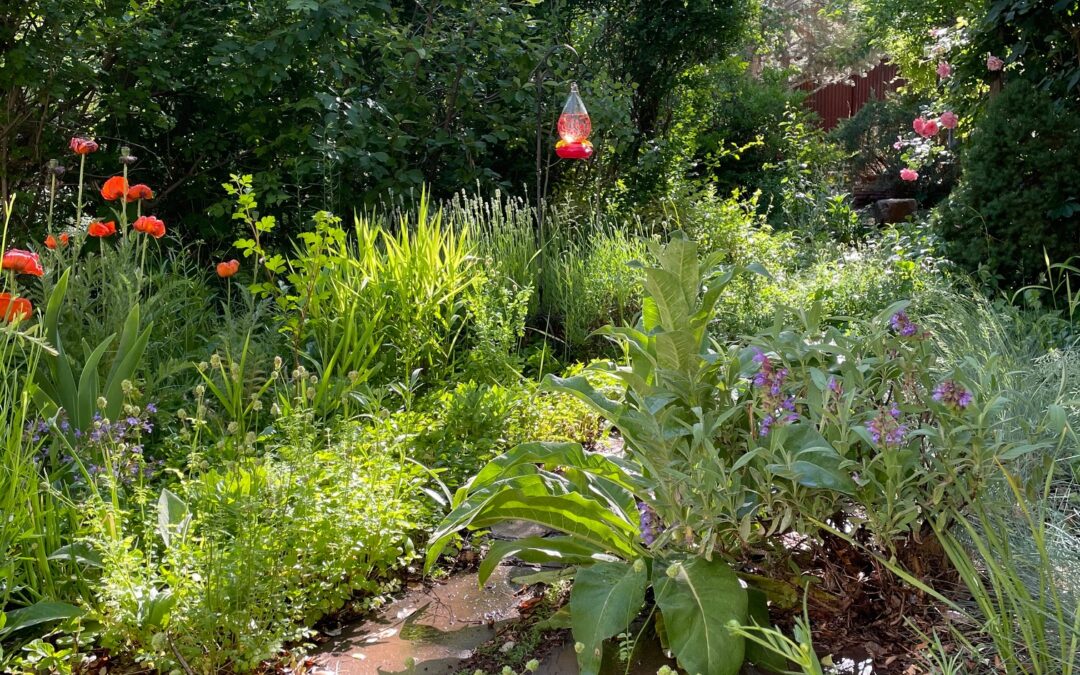Food forests and edible landscapes have been around for a very long time. They are what helped ancient humans survive and thrive. Hunter-gatherers likely did not expend precious energy by wandering aimlessly, hoping to find sustenance, but rather they were able to evaluate the landscape around them and learn to harvest food occurring naturally in their habitats.
Forest edges were rich sources of diverse plant species, and ancient humans learned what species were edible, where to find them and even ways to support and encourage the growth of plants useful to them. Food forests or edible landscapes have evolved and adapted over thousands of years as humans’ hands and minds have learned to design them to their nutritional needs and geographic limitations. A food forest will be very different depending on where it is in the world, but all share some common traits that can be adapted to almost any climate.
Food forests are very different from traditional farming or growing a vegetable garden. They are designed to mimic the natural forest edge, where species producing edible fruits, nuts, berries, roots and tubers grow in natural layers. We can imitate this pattern with species of our choosing that will do well in our hardiness zone and climate. There are many references and publications on the subject and a quick internet search is an easy way to begin, as is your local bookstore’s gardening section.

The philosophy of permaculture design, popularized over the last few decades, has brought a new awareness to our landscape and garden design; we have learned to make use of topography, natural water movement, soil structure and amendments, sun and shade patterns over the seasons, and the importance of pollinators and wildlife in our gardens and lives. A food forest is a functional, beautiful and diverse way to garden holistically.
When you imagine your food forest, think about the layers of plant species and the food sources they provide. First, at the outer edge, there is the canopy, the tallest layer of trees. These might be fruit- or nut-bearing deciduous trees or even some conifers here or there, as even a pine tree has edible parts, and the needles make a fine tea.
The second story is a mid-level layer of smaller trees, such as semi-dwarf or dwarf apple, peach and plum trees. Under the smaller fruit trees comes the shrub layer. If shaded, it could be currants or gooseberries. If sunnier, perhaps raspberries or blackberries.
After the shrubs comes the herbaceous layer, planted with perennial herbs like rosemary, garden sage and thyme. Ground covers like strawberries can sprawl under and around, followed by root crops like carrots, radishes and more. Vining plants are important, too. Some, like sweet potatoes, can be both root and vine. Others, like grapes, can utilize the structure of the trees to move up through the branches, making harvesting an easy task.
In some environments, you can grow edible mushrooms as part of the lowest layer; they will feed on the decomposing mulch and decaying wood that is part of the forest floor. Mulch is critical in any garden or landscape and a necessity in a healthy food forest. Fallen leaves are an excellent natural mulch as are wood chips. Leaving or intentionally placing dead branches and logs is a great way to recycle nutrients naturally into the soil profile. Having rocks or stones in the mix is also a very good thing as they slowly release minerals as they break down over long periods of time.
Most of the plants in your food forest will be perennials, but as you see, there are places for annual herbs or vegetables anywhere there is room and the proper amount of shade, sunlight and moisture. Companion planting is a great way to decide what goes where, and diversity is the strength of any plant community. A food forest is the oldest, most resilient agroecosystem in the world, whether occurring naturally, enhanced by human hands and minds, or entirely created by intention and design.
Some of the benefits of a food forest are increased harvests based on diversity, nutrient storage and water retention in soil protected by mulch and overstory; healthy soil holding a host of beneficial microorganisms; and less weed and pest populations, again due to density and diversity, and therefore less maintenance and inputs (think fertilizer, weed control). Of course, organic principles are the way to go when growing anything you plan on consuming.
Like any garden or landscape, a food forest can and should reflect the humans who are part of the ecosystem and should be a place where native plants, wildflowers and grasses all have a place in the garden, where beauty, joy and learning from Mother Nature are sources of education, nutrition, comfort and pleasure.

Other articles that might be of interest:
Vegetable and Herb Gardening in Small Spaces
Easy Edible Plants for First-Time Growers



